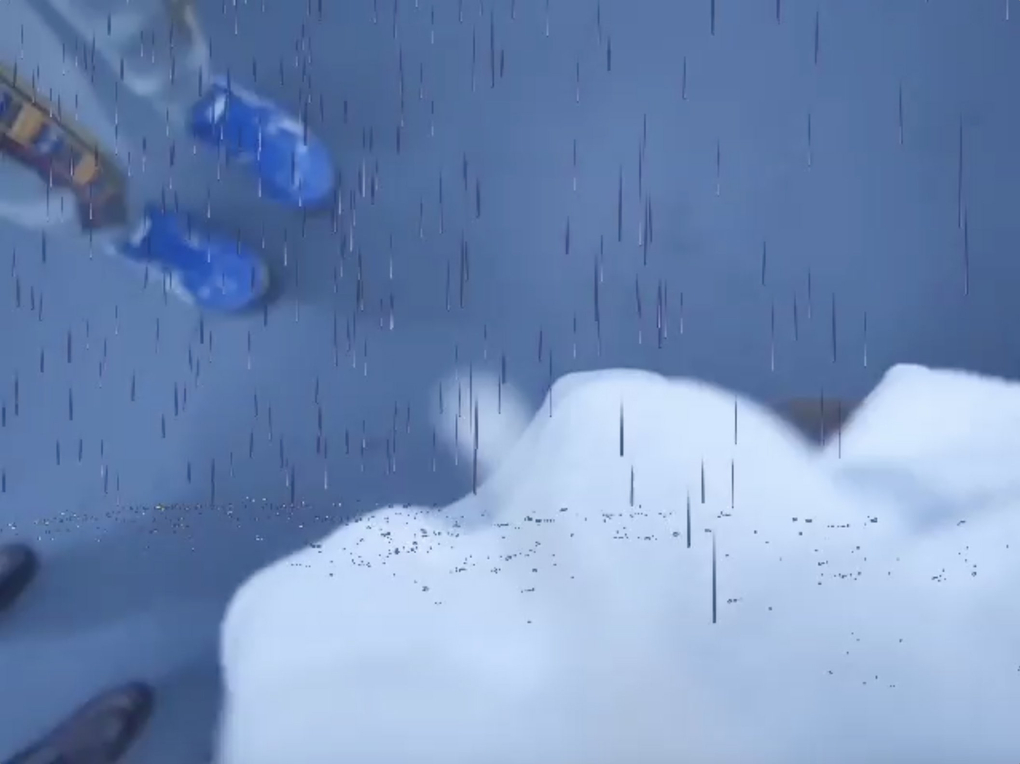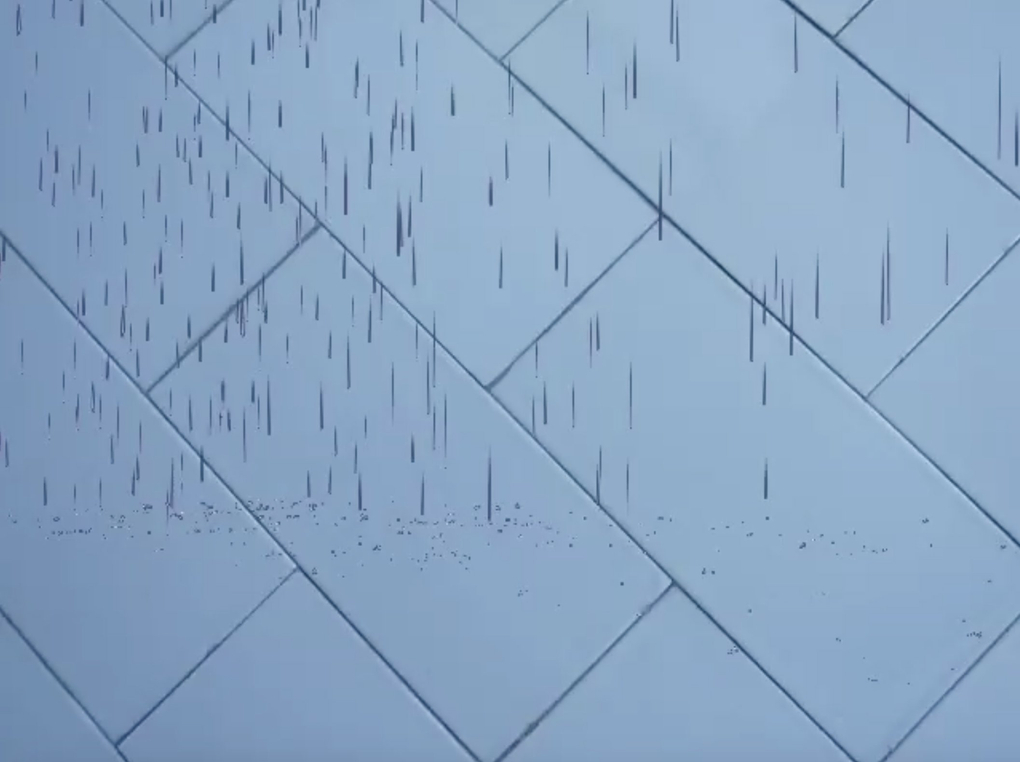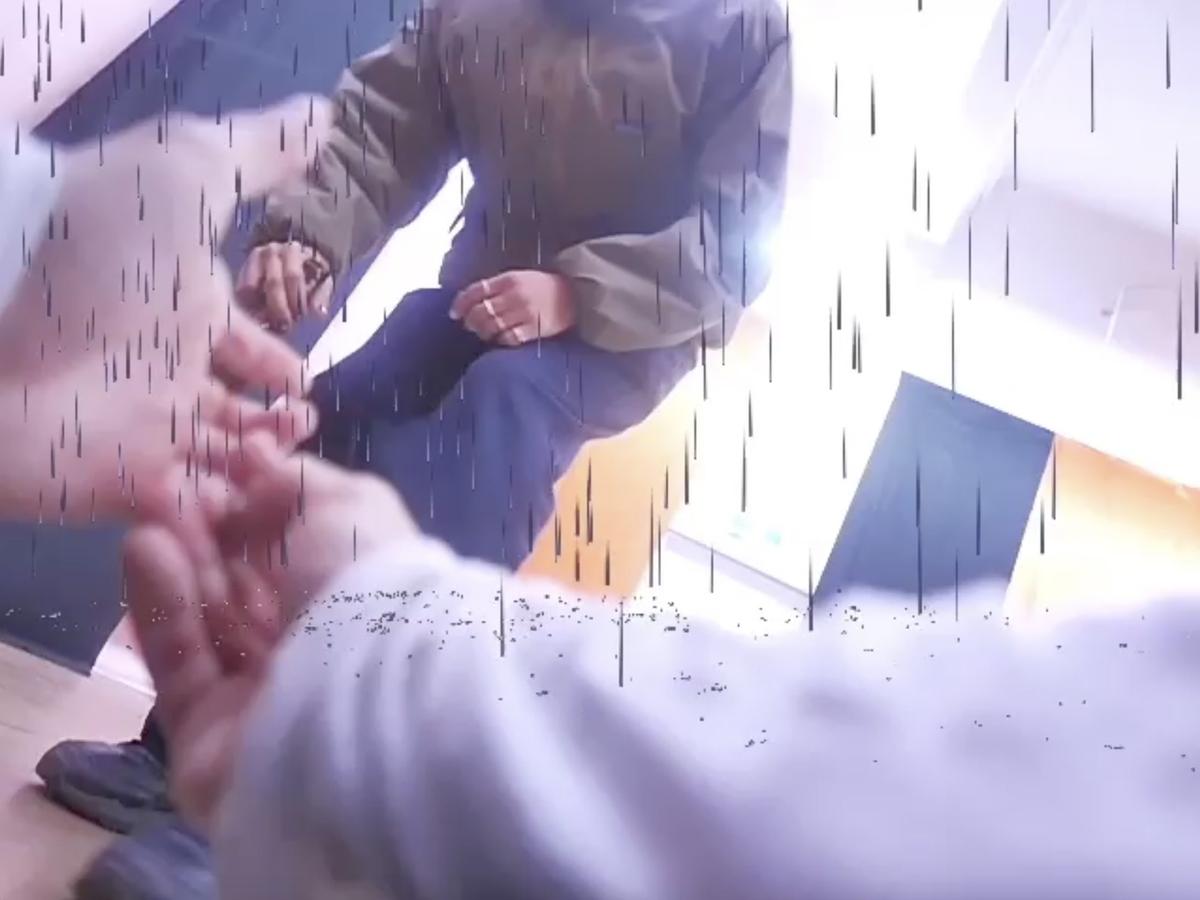When I think of "K Road Paintings" I think of the Rockshop mural near Upper Queen St, the faded aesthetic of garish labia swirls, loud moustaches, painted power boxes with cartooned figures. Artists who are sometimes collectable but mostly caricatures of their environment. Separate to this are the gallerists whose presence on Karangahape Road signals that they can tastefully sit within this milieu and be successful, influential even, to the contemporary art scene both here and abroad.
It is an environment that Ronan Lee is familiar with. At the time of his exhibition K Road Paintings at Mercy Pictures last July, Lee was living on K' Road, part of the artist-collective who ran Mercy Pictures and lobbying to #savethefineartslibrary, a movement that would later become a book-sharing room in Samoa House—directly above other project spaces RM and Strange Haven (both on or behind K’ Road). For Lee and the Mercy Pictures team, the area was suffused with relational identity and, at least outwardly, positioned them as part of a cultural production scene that valorised their independent, messy aesthetic.
Lee’s exhibition displayed a collection of art school folders, keyrings, trashcans, a two-channel video installation and smatterings of shit. It was not kitsch, and seemed atypical of the type of painting one might see on K' Road. The video, titled Big Night Down the Drain (Rain for Jacquie) (2018), follows Lee for nearly an hour and a half as he attends two exhibition openings—Sarah Callesen and Shelley Simpson at RM and Jacqueline Fraser at Michael Lett. The content is mundane. Blurry elbows, vaguely recognisable friends gesticulating in the distance, Lee taking handfuls of chips from a glass bowl and picking at his beer label habitually. Conversations about YouTube, celebrities, the allure of Jacqueline Fraser, the group's plans for the evening and the recording itself. Not everyone in the periphery is aware that they are being filmed, but the proximity of the camera to Lee's body and the sound quality of the video mean that it is mostly Lee's own interactions or those next to him that are captured.
Stylistically the video is a kind of poor reality television that can be loosely compared to mumblecore, a film subgenre that arose in the early 2000s, focussing on relationships and everyday scenarios of youth in low-budget, often improvised, scenes. The emergence of these films coincided with a new affordability in digital technologies and proliferation of the artist as a "post-Internet" body creating works that tried to capture the experience of living within the internet's shadow.
Lee's video has an unfiltered sense of boredom. It is an endless scroll of meaningless conversations and unmemorable encounters, overlaid with animated rain which obscures and confines the content. The process of watching is like a reflection of how we experience the online world—filters, paywalls, trolls who hide behind anonymity and exploit the medium’s lack of transparency.

Still from Big Night Down the Drain (Rain for Jacquie) (2018) Ronan Lee
The potential for the Internet to skew the presentation of information has been a central concern throughout Lee's recent practice. A core element of his interests have focussed on the anonymous message board platform 4chan, often associated with facilitating the discussion of alt-right ideologies, pranking and coining new internet terminology such as the "lolcow" (a word that served as inspiration for the titles of Lee's art folio carry cases that he has reproduced in a number of exhibitions). 4chan users often communicate in a certain style characterised by phonetically misspelt text and abbreviations. They are referred to as trolls because of the group's proclivity for discordance.
In a recent interview with Lee, he defines trolling as "provocation or lying through misleading". The video purports to be an accurate portrayal of his evening, yet the main subjects are vaguely aware of the camera's presence and seem to underperform or goofily look at the lens accordingly. The exhibition title frames the content as a certain genre of painting—where are the canvases?!, some might holler—yet questions the way that this categorisation operates. The poo smeared down the exterior windows is fake, the turd mounds edible. Promotional posters, included within the show and pasted on the streets, depicted a full-page duplication of the Stolen Girlfriends Club logo and were sometimes overlaid with crayon-sized Mercy Pictures stamps. There was a whiff of the gallery being sponsored by the brand, or that Lee was staging a coup within a Stolen Girlfriends Club event. In fact, the logo had little to do with the exhibition, other than the fact that it signified bad taste, or perhaps good taste, to those who might recognise its sinuosity.
The tactic of confusion is a powerful one, as outlined by Wesley Yang in his essay, "Is it okay to be white?"(1)
Whereas once the 4chan trolls gleefully trafficked in shock and provocation, they had now discovered the power of indirection and understatement, of confounding instead of confronting their enemies.
Yang goes onto say that by explicitly avoiding certain contestable extremes, far-right groups have garnered support through precipitating arguments that were never perhaps envisaged by their adversaries. This moderate approach is utilised by Lee to interrogate certain fallacies around art and the insularity of its production. If you can withstand watching the video, there is an ambivalent boredom that persists amidst the repetition in conversation and sheer length of time Lee chooses to stay at Fraser's opening (he is at RM for less than 15 minutes). He asks, is becoming a successful artist really linked to attending as many—"good!"—exhibition openings as possible and ensuring that you are seen, remembered?
As an artist Lee refuses to be gregarious. His installations look frenetic, pilfered from wholesale websites and junkyards. He is at pains to appear apathetic, casting handles for his store-bought lolcows, painting them black and then graffitiing or lightly spraying over the top so that they look worn. He has been known to take texts that other artists have written and use them to explain his own work, printing his name beside theirs. He leaves broken items on the floor, doesn’t mind if beer is spilt or some works are kicked around inadvertently. He is evasive and communicates in abbreviations and misspelt words, says “oi” when he means “hi”. He smears his pieces in faux faeces and, in the case of the video, hides the content behind a stock rain animation that repeats throughout on a short loop.
This matters because Lee is at once obstinate about the implicit labour that artists need to perform, and keenly aware that it is largely necessary in order to succeed. His reticence signals an admission that he is less commercially successful than he might wish to one day be, and a tenaciousness in his desire to carve his own path by producing art in a way that is authentic to him. He is interested in the idea of emergent art as a luxury commodity defined by Marx, something that is produced as surplus to the creator’s material needs. Lee’s art cannot sustain him and is presented in a way where it almost vandalises its own heroism.

Still from Big Night Down the Drain (Rain for Jacquie) (2018) Ronan Lee
Some of the artworks in the exhibition were literally presented in the trash. A pile of lolcows sat in a metal bin by the entrance. Beneath a small stool was a wastepaper basket with crumpled exhibition posters inside, and a pieces of a smashed Guy Fawkes mask. Of the two channels in the video installation, one of the projectors was situated in a topped plastic bin partially obscured by the lid so that it left only the shape of a crescent moon silhouetted onto the wall. Likewise, in Lee's exhibition "VACHE" at Window (March 2018) his customised roomsheets were smattered in faux bird poo and sat within a University bin that was chained to a bench. The majority of the audience were not in on the joke, and the receptacle began to fill with rubbish. It was eventually removed by campus maintenance staff.
What happens when you realise you have been tricked, that the artist has little intention to follow through with the journey on which you thought you were invited? You perhaps begin to find the crevices between the message and the meaning, look behind the content and into the networks that the exhibition sits within. Big Night Down the Drain (Rain for Jacquie) is a portrait of an emerging generation of artists who are entrenched within the Auckland art community and partial document of Jacqueline Fraser's opening for her exhibition THE MAKING OF CARBON COPY 2018 (recorded 3 July 2018)—yet the importance of the work lies in investigating and attempting to make visible the dynamics of the production, labour and value of art.
Throughout the video, a subtle hierarchy emerges between dealer and artist, emergent and established. Lee's group spend considerably longer at Michael Lett than RM, perhaps in part because "there's heaps of beer here" (note: the implication that this is a moneyed space). They speak of their admiration for Fraser because of her keen interest in rap music, young models and skaters; and the way that she produces art with such genuine fervour. Fraser, whom Lee has cited as influential to his practice, is seen as an icon within New Zealand's artistic canon. One of Lee's friends seems infatuated with her, and the group joke about him having a crush. The friend is visibly bashful.
It seems the gallery environment is familiar to Lee. He and his friends sit on the floor and chat in a circle. They discuss the option of attending the opening party dinner that a few have been invited to. At one point, Lee enters gallerist Michael Lett's office whilst vaping and blows smoke over the security camera footage in a double-surveillance manoeuvre. He pans the lens across Lett's desk and hypes "ratchettteen!" to his comrade (an Instagram account created by Lee and two others which purports to be a media promoter attempting to boost its social media presence through using phrases such as “like for like”, a myriad of hashtags, memes and watermarked logos). This is one of the few moments that the device is lifted from Lee's side, where it has been hanging throughout on a backpack strap near his hip. To scan someone's personal space feels invasive and active, a little more trollish and perhaps curious than the casual arrogance of seeing blurry figures pass by situationally.
As Lee walks around the exhibition he discusses Fraser's artworks, sometimes facing the wall and pivoting so that they are in full view. Swathes of orange and pink fabric cushion collaged canvases, people enter the tinsel curtains and a child asks, "is that real gold?" Lee's friend (bashful) says with fervour and a hint of irony, "I love the sexy models, I love it all." It becomes apparent that another companion, George Rump, was Fraser’s installation assistant and helped blow up the yellow balloons that grin on the floor. "Artist's breath," the group chortles, signalling a friendly rapport and playful awareness of the art historical lineage that they sit within.(3)
An oblique reference to art history is present in the titles and spirit behind much of Lee's practice. "VACHE" referred to a series of René Magritte paintings that were executed in an uncharacteristically crude style and included provocative popular culture references. The word translates to "cow" in French, but vacherie is a nastiness, or a mean trick.(4) The phrase Big Night Down the Drain is uplifted from a Georg Baselitz painting of the same name (1962-3) showing a solitary figure holding his absurdly large penis and staring ahead with a beady gaze, body sallow and crudely rendered. It has been postulated that the figure was drunk, or a self-portrait of the artist. It was deemed violent and objectionable and shares with Lee's video the sense that there has been a violation of privacy, that we are witnessing something that has been shown to us but is not in existence for our gaze.
Perhaps the most confronting moment in the video is at the end when Lee enters the Michael Lett bathroom and begins to pee with his camera facing the wall. His trickle echoes through the basement space as the rain animation continues to spit. There is faint ringing as his belt chinks, he pauses and pans to yellow urine in the toilet bowl and an empty beer bottle on top of the loo. Without appearing to wash his hands, he closes the door and exits the gallery upstairs. The video ends. This kind of intimate gesture plays on notions of access and the elitism that art is seen to embrace. There is a sense of surveillance that ties into migration, portals and borders. In his exhibition installation, the keys hanging on the wall allowed buyers entry to the Mercy Pictures space. These were sold in editions, each with hand-painted eyeballs dangling off their chains. Much like the video, the keys disrupted the sanctity of private property and tickled a desire for behind-the-scenes visibility, a kind of fake membership to the Auckland art world.
He likens these to hieroglyphics, a way of sharing encrypted information about value and culture pictorially.
There is a sense of audacity in the way that Lee boldly records people without their consent and presumes the video's content interesting enough to be exhibited. He is infiltrating Fraser's exhibition space, much like his defecation of the room through painterly means in the object-practice surrounding his video. The graffiti on his lolcows serves as another form of marking, channelling street art as a mechanism for renegade and disturbia.Each tag has been stencilled by Lee and relates to a specific person, influencers such as Asspizza or Dash Snow. He likens these to hieroglyphics, a way of sharing encrypted information about value and culture pictorially. Pulling these signifiers from their context seems a lot like a version of Fraser's collages—fame and power and sauce. The cachet of the figures could easily drip the artworks in style over substance, yet these people are accessible only insofar as they are flattened and melded into a hybrid state. They have become vestiges of something celebratory that has been reinvented as new artistic currency.
Within the exhibition, the lolcows were grouped in clusters and "yoked" together with zip ties and nylon bag straps, alluding to the interconnectedness of the bodies that each folder represented. Extending on this were suitcases that sat on the gallery floor in pods, stuffed with Mercy Pictures paraphernalia and etherkiller cables designed to fry a computer. The video was about people and the ways they interact with each other to form networks within Auckland’s small art ecology. The conjugation of these elements was like a nucleus for Lee’s queries into anti-globalisation and the matrixes that hold us together.
At its heart, Lee’s exhibition was a poignant portrait of K’ Road and the spirit for which it has become known. A painting of the grime and movement symptomatic of a pavement. A subtle depiction of a street that seems to have more public rubbish bins than almost anywhere else in the city, a place that is undergoing rapid gentrification, has a powerful police presence and is still home to a sense of inclusivity and nonchalance. I was once leaving Michael Lett when I was startled by a gentleman urinating in the alcove behind the grate. It was around midday and he seemed unphased by my presence. He completed the task and moved on. Perhaps Lee was not being sardonic. It never rains when you want it to.
